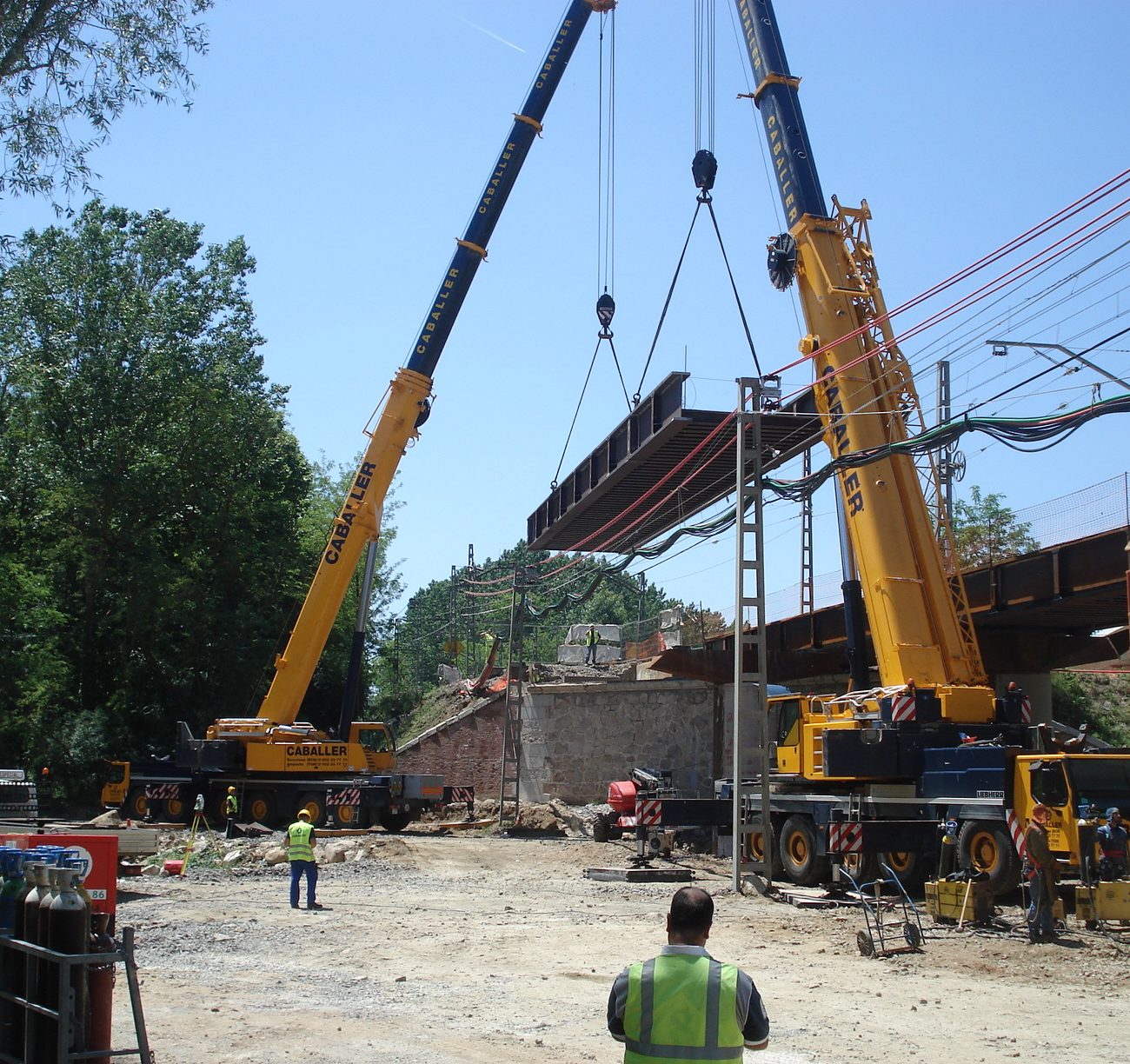The aim of this project is the replacement of a railway steel bridge. The current bridge, with double deck, has four spans of 17.50-25.00-22.50-17.50 m. The deck is a steel structure with open riveted profiles. The bridge supports two tracks. The longitudinal section of the deck consists of three beams, a central one and two lateral, which are joined by four sleepers that also support the secondary longitudinal girders located under the tracks. This shaping presents also diagonal and wind bracings.
The abutments are made of masonry. The piers located on both ends (P1 and P3) consist of three separate shafts braced by a steel riveted sheets. Each shaft is made of plain concrete covered by riveted plates. Its section is circular and it has a widening at the base with truncated cone shape. The central pile (P2) is a pile-wall. All of them have a shallow foundation.
The new structure consists of two identical steel decks, one for each track. Each deck is made up of two longitudinal beams connected by joists which support the ballast and the railway. In the abutments, the beams lean on the pile-caps of the micropiles. The central spans are supported by pile foundations.
In order to avoid cutting completely the rail traffic over the river, in a first stage only half of the existing deck was removed (a main longitudinal beam, two secondary ones and the related cross sections), as well as the corresponding halves of the piers and footings are demolished. Rail traffic runs with speed restrictions through the other half of the deck. After, the new corresponding piers and the pile-caps of this part of the deck were built. Then, the preassembled sections of the new deck were placed and welded together. When the first deck was finished, the rail traffic through the new built structure was restored.
In a second stage the same sequence as the other half was carried out. The main complexity of this project was to avoid the interruption of the rail traffic (except during the maintenance gap during night, 4 hours per day). This rail line is part of the commuter trains of the city of Barcelona. This fact conditioned the typology of the new bridge and its construction process.

Calle Núñez de Balboa, 120
28006 Madrid
Spain
Tu privacidad es importante
Nosotros y nuestros partners usamos cookies para personalizar el contenido y pueden recopilar información no confidencial. Para más información visita las Condiciones de uso.